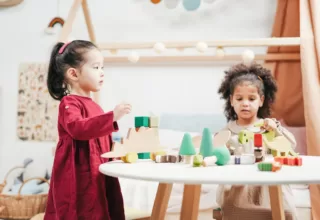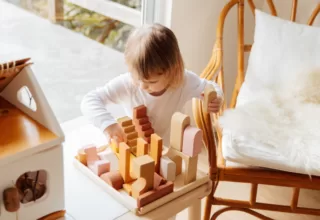Are there any specific safety guidelines for wooden toys?
Outline of the Article
- Introduction
- Safety Standards for Wooden Toys
- Materials Used in Wooden Toys
- Non-Toxic Finishes and Paints
- Size and Shape Considerations
- Durability and Strength
- Testing and Certification
- Care and Maintenance
- Supervision and Age Recommendations
- Safe Manufacturing Practices
- Safety Tips for Consumers
- Potential Risks and Precautions
- Educating Children about Toy Safety
- Benefits of Wooden Toys
- Conclusion
Wooden toys have long been cherished for their timeless charm, durability, and educational value. As parents and caregivers, ensuring the safety of children during playtime is of paramount importance. Are there any specific safety guidelines for wooden toys that we should be aware of? In this article, we will explore the essential safety considerations when it comes to wooden toys, from materials and finishes to size, shape, and manufacturing practices. So, let’s delve into the world of wooden toys and discover how to make playtime both fun and safe.
Introduction
As children engage in imaginative play and exploration, toys play a significant role in their development. However, safety concerns arise when it comes to selecting the right toys for our little ones. Wooden toys have gained popularity due to their natural appeal and durability, but it is crucial to understand the specific safety guidelines associated with them.
Safety Standards for Wooden Toys
To ensure the safety of children, there are internationally recognized safety standards that manufacturers must adhere to. These standards cover various aspects, including material safety, durability, and design considerations. Compliance with these standards ensures that wooden toys meet the necessary safety requirements.
Materials Used in Wooden Toys
Wooden toys are typically made from different types of wood, each with its unique characteristics. Common wood types include hardwoods like oak, beech, and maple, as well as softwoods like pine. It is essential to consider the safety implications of different wood types, such as potential allergens or splintering risks.
Non-Toxic Finishes and Paints
When selecting wooden toys, it is crucial to ensure that they are finished with non-toxic materials. Children often explore toys by putting them in their mouths, increasing the risk of ingesting harmful substances. Look for toys that have been coated with safe finishes, such as water-based paints or natural oils. Additionally, certifications like ASTM F963 or EN 71 indicate that the finishes used on the toys meet specific safety standards.
Size and Shape Considerations
To prevent choking hazards, wooden toys should be designed with appropriate sizes and shapes for different age groups. Avoid toys with small detachable parts that can be swallowed. Furthermore, ensure that the edges of wooden toys are smooth and rounded to minimize the risk of injury.
Durability and Strength
Wooden toys are known for their durability, but it is essential to choose toys that are well-made and sturdy. Check for any loose or easily breakable parts that could pose safety risks. Wooden toys should be able to withstand the rigors of play without splintering or breaking apart.
Testing and Certification
Independent testing organizations play a crucial role in ensuring the safety of wooden toys. Look for toys that have been tested and certified by reputable organizations like the Consumer Product Safety Commission (CPSC) or the European Union’s CE marking. These certifications provide assurance that the toys meet stringent safety standards.
Care and Maintenance
Proper care and maintenance of wooden toys contribute to their longevity and safety. Clean wooden toys regularly using mild soap and water, ensuring that they are thoroughly dried afterward. Avoid soaking wooden toys or using harsh chemicals that could damage the wood or finishes.
Supervision and Age Recommendations
While wooden toys are generally safe, it is essential to provide adequate supervision during playtime, especially for younger children. Follow the age recommendations provided by the manufacturer to ensure that the toy is suitable for your child’s developmental stage. Supervision allows for prompt intervention in case of any potential safety concerns.
Safe Manufacturing Practices
Ethical manufacturing practices and quality control measures are vital for ensuring the safety of wooden toys. Choose toys from manufacturers that prioritize worker safety and adhere to strict quality control processes. This helps ensure that the toys are made with care and meet the necessary safety standards.
Safety Tips for Consumers
As a consumer, there are additional steps you can take to enhance toy safety. Before purchasing a wooden toy, inspect it for any defects or signs of poor craftsmanship. Check for loose parts, sharp edges, or any other potential hazards. Additionally, regularly examine your wooden toys for wear and tear, and promptly address any safety concerns that arise.
Potential Risks and Precautions
While wooden toys are generally safe, it’s important to be aware of potential risks and take necessary precautions. Some wooden toys may have small magnets or detachable parts that could pose choking hazards. Keep these toys away from young children who are prone to putting objects in their mouths. Additionally, exercise caution with wooden toys near heat sources, as wood is combustible.
Educating Children about Toy Safety
Teaching children about toy safety is crucial for their well-being. Engage in conversations with your child about safe play practices, such as not throwing or swinging toys, and using them as intended. Encourage responsibility and awareness during playtime, helping them understand the importance of following safety guidelines.
Benefits of Wooden Toys
Despite the safety considerations, wooden toys offer numerous benefits for children. They promote imaginative play, sensory exploration, and fine motor skills development. Wooden toys are also environmentally sustainable, as they are often made from renewable resources and can be passed down through generations.
Conclusion
In conclusion, when it comes to wooden toys, specific safety guidelines should be followed to ensure the well-being of children. From selecting toys made with non-toxic finishes to considering size, shape, and manufacturing practices, every aspect contributes to a safe play experience. By being aware of potential risks, adhering to safety standards, and providing appropriate supervision, we can create a safe and enjoyable environment for our children. Wooden toys offer a unique combination of durability, eco-friendliness, and developmental benefits. By choosing well-made, safe wooden toys and following the guidelines outlined in this article, you can provide your children with engaging playtime while prioritizing their safety.
FAQs
Are wooden toys safer than plastic toys?
Wooden toys are generally considered safer than plastic toys due to their non-toxic materials and durability. However, it’s important to choose wooden toys that meet safety standards and have been tested for potential hazards.
Can wooden toys splinter and cause injuries?
While wooden toys are known for their durability, poor craftsmanship or low-quality materials can lead to splintering. It’s crucial to choose well-made wooden toys from reputable manufacturers to minimize the risk of splinters.
Are all wooden toy finishes non-toxic?
Not all wooden toy finishes are non-toxic. Look for toys that are labeled as using non-toxic finishes, such as water-based paints or natural oils. Certifications like ASTM F963 or EN 71 indicate that the finishes meet safety standards.
What age group are wooden toys suitable for?
Wooden toys are available for various age groups, from infants to older children. Manufacturers usually provide age recommendations to help you choose toys that are developmentally appropriate for your child.
How should I clean and maintain wooden toys?
To clean wooden toys, use mild soap and water. Avoid soaking the toys and ensure they are thoroughly dried afterward. Refrain from using harsh chemicals that may damage the wood or finishes.
How useful was this post?
Click on a star to rate it!
Average rating 0 / 5. Vote count: 0
No votes so far! Be the first to rate this post.



